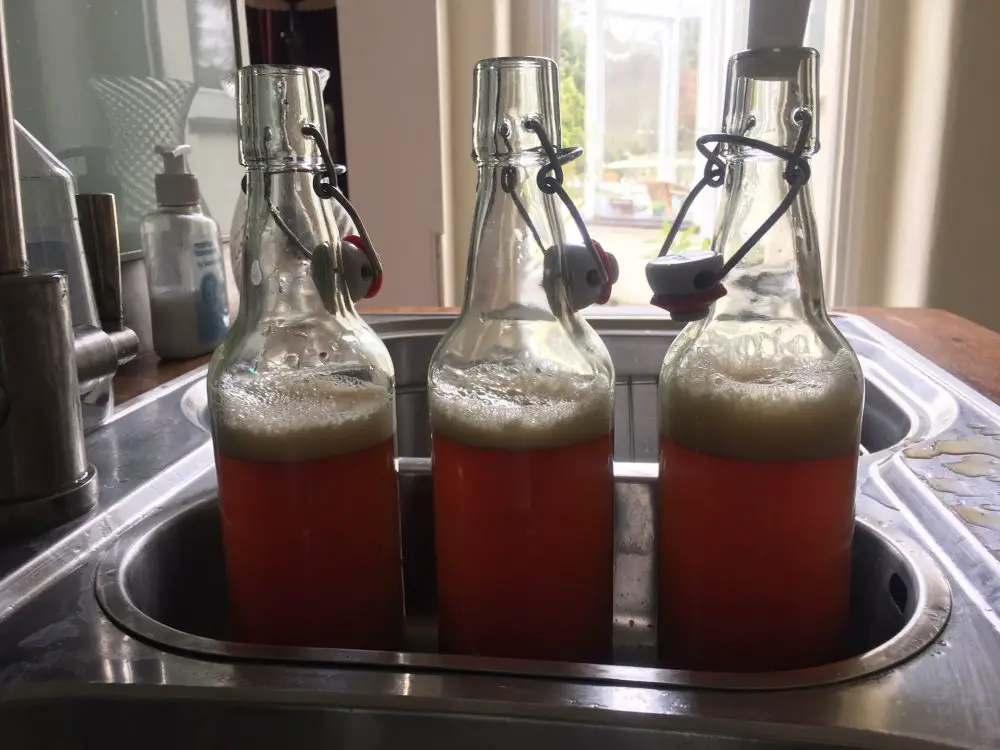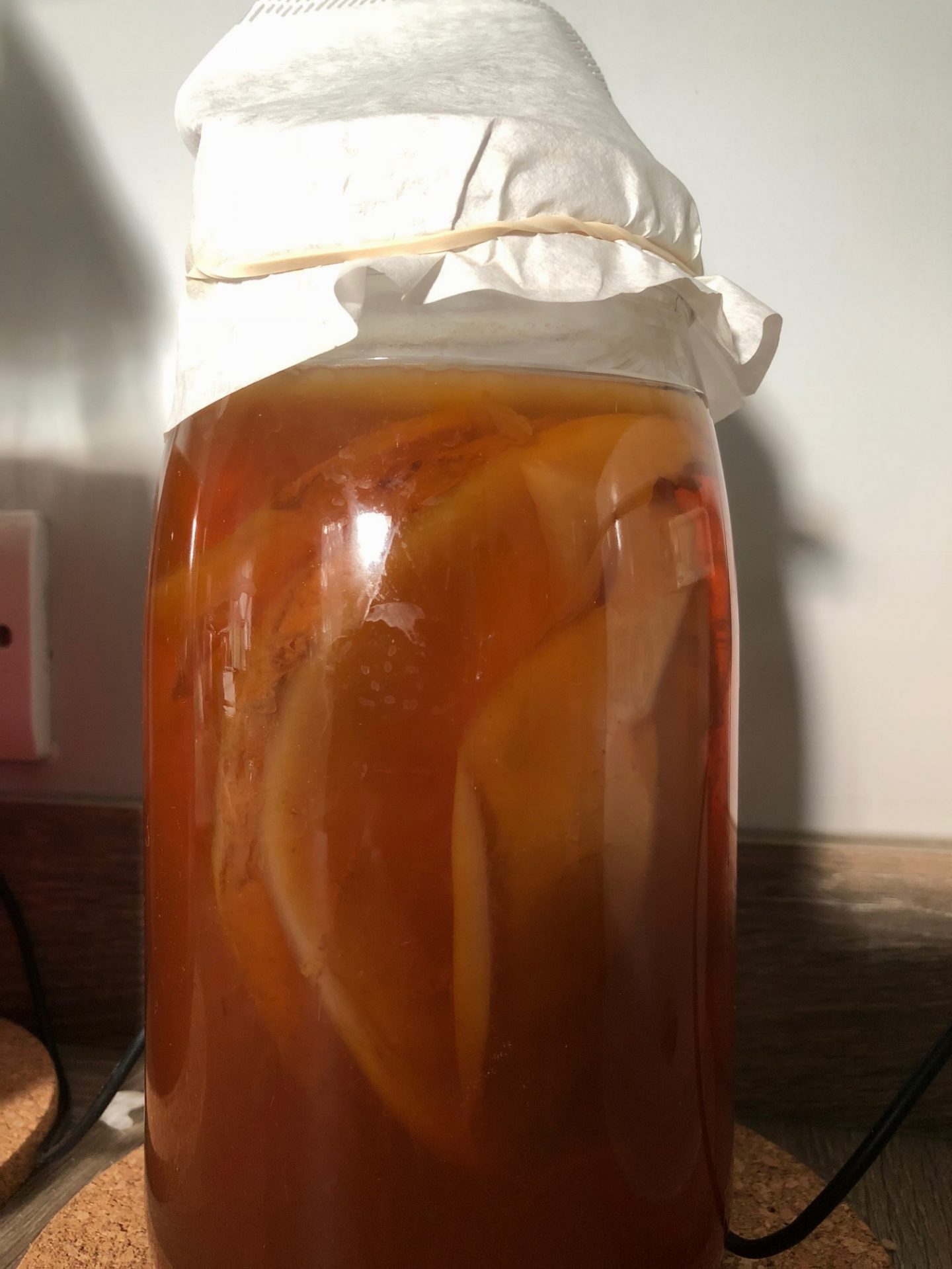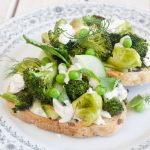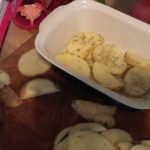
Despite its recent rise in popularity, I am still often greeted with blank expressions both in person and online when I talk about it. So, here you go…
A Gingey guide to everything kombucha!

What is it?
Kombucha is a fermented tea drink made with sugar and tea with a symbiotic culture of bacteria and yeast. This culture is known as a Scoby. The Scoby is the weird alien looking disc which floats at the top of the liquid. This grows and splits over time to produce more Scobies which can be shared with friends and used to create more kombucha! The yeast eats the sugar in the tea (just like in bread, beer and wine) and the bacteria eat the tea. Sounds rank right? It’s really not, it’s actually a very natural thing which is thought to be a probiotic and very good for your tummy. People have been making and drinking it for thousands of years.
What does it taste like?
You can get flavoured kombucha but the original stuff has a flavour reminiscent of flat, dry cider with the sweet back notes of tea. It has a slight fizz to it which grows over time as it matures. It’s an acquired taste but often, people who’ve tried it expecting the worst have been pleasantly surprised!
Where can I buy it?
Most ethical and organic supermarkets sell Kombucha and you’ll often spot it in delis and cafes too. Sainsbury’s have even started stocking their own No.1 brand. Here in Bristol, there are quite a few brands available in Better Foods and they sell it in Wild Oats too. Be warned, pre-made kombucha is expensive! But, a great way to find out if you like it enough to start brewing your own.
How do I make it?
At this point, I’m going to suggest that you read this blog from The Kitchn for a really detailed explanation of what and what not to do when it comes to brewing your own Kombucha. It took us a couple of months to get it right and you need to get a feel for when it’s ready as every batch varies slightly. You’ll need a scoby along with some of its previous batch to get going, like a sourdough starter.

The recipe we use:
Ingredients:
- 160 grams of sugar
- 200 ml of previous batch kombucha (you can use un-pasteurised shop bought for this, or take the liquid from a previous batch.) If you don’t have any kombucha at all, use 2 tablespoons of cider vinegar
- 1 healthy scoby
- 3-4 tea bags
- 2 litres of water
Method:
- Boil 1 litre of water in a large saucepan (big enough for at least 2 litres of water – you’ll see why soon)
- Turn the heat down and add 3-4 black tea bags
- Allow the tea bags to gently heat through for 15 minutes, then squeeze a little and take them out.
- Add the sugar and stir until it dissolves.
- Take it off the heat.
- Add another 1 litre of cold water to the tea mix and put to one side for a moment.
- Time to add your scoby. After thoroughly washing your hands and rinsing them in vinegar to make sure no soap remains, gently pick it up from its previous container and place it into the jar.
- Pour in 200-300 ml previous batch liquid (even if it’s gone over) into the jar and then top up with new tea mix.
- Depending on how warm your home is, Allow the liquid to ferment in the jar for a week. In this heatwave, 5 days is plenty. Don’t seal the jar, use muslin or a better still a few layers of coffee filters kept on with some elastic bands to allow the liquid to breathe but nothing nasty to get in.
- Once it’s ready, gently pour the liquid into smaller bottles and allow it to continue fermenting for another few days. Burp the bottles every few days to let the gas out (basically take the lid off!). The liquid left in the jar is now ready for your next batch!
- Keep them a cool place or even better, the fridge. Test a bit every day, until it’s ready to drink. We’ve found the optimal time frame is usually 2-3 days after bottling.
Top tip:
Don’t use metal (steel silver in the kombucha, as it can kill the scoby…) use plastic/silicone/glass if you can!

This all sounds complicated but as you get going, you’ll learn whats right and what’s wrong. Test and learn until you have something you’re happy with! We drink a glass every morning with our cuppa tea and I can’t imagine life without it now!
You can grow your own scoby like we did for our second culture. For that you’ll need an unpasturised bottle of kombucha, either from a friend or if you’re luckly, from a shop. Beware that most shop-bought stuff is pasturised, which kills off the friendly bacteria and yeast that you’ll be growing your own scoby from. It’s a bit more difficult to get this going, so I’ll come back to fill you in on how to get it going.
Want to try making another fermented dish at home? Try my kimchi recipe!


Thanks so much for sharing this! I love kombucha, and I really want to start making it at home!
No problem – good luck with your own kombucha!
Hi: recently, my scoby has gotten a quarter-sized bluish-blackish spot on top of it. The rest of the scoby looks healthy, and the kombucha tea is delicious after 7 days. I do not detect an odor from it either. Is this a problem? Thanks, Hetty
Hi Hetty, it sounds like it could be mould, in which case, I would recommend you get rid. If you’re sure it’s an isolated patch, you could try to gently split the scoby down and salvage the remainder? Good luck!